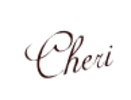Tuesday, I took a few minutes to sit down, relax and watch Crista Cowen, on
Ancestry.com Livestream, as she talked about Correcting Mistakes in Your Family Tree. If you've never watched Crista and her fun tips about genealogy research and Ancestry.com, I would encourage you to do so. You can watch the Livestream broadcasts whether or not you have an ancestry.com subscription. They are archived if you can't tune in on Tuesdays.
I do need to say that although I have an ancestry.com banner on my blog, I have never received any compensation from them, nor will I for this post!
I have been using Ancestry.com since it came on line so I thought I was using the features as well as I could...until Crista showed this drop down box under Tree pages. This box is right next to your ancestry,com on line Tree Name.
 |
| Screen Capture:Tree pages Drop Down Box -Ancestry.com |
The drop down box leads to this when clicking on Tree Overview: A detailed page of all the comments, pictures, hints, etc. that you have on your tree!
 |
| Screen Capture: Tree Overview page Ancestsry.com |
WHY hadn't I noticed it before?! OK, I am sure everyone else who uses Ancestry.com already knew it was there!
Looking at the right side of the page, I noticed this list:
 |
| Screen Capture Hints on Tree Overview page Ancestry.com |
Oh, my goodness! Hints listed in a manageable way! Instead of looking at that Shaky Leaf at the top of my Home Page and feeling a bit overwhelmed, I could have been coming here and looking for specific types of Hints.
I started with photo's first. Skimming through a list of only 385 seemed reasonable. It didn't take long to find these pictures.
 |
| Screen Capture Picture Hint Results Ancestry.com |
The links were for two of the sisters of Arthur Wellington Baker (1857-1940), my Paternal Great Great Grandfather.
 |
Mary Ellen Baker Richardson (1853-1946)
Picture Courtesy Sarah Fulton, Ancestry.com |
 |
Laura Montgomery Baker (1858-1948)
Picture Courtesy Sarah Fulton,Ancestry.com |
Next, I clicked on the Stories link and found these.
 |
| Screen Capture Stories Results page Ancestry.com |
Susan Rebecca Thames Beatson (1853-1940) was the daughter of my 3rd Great Grandparents,
Thomas Lemuel Thames (1827-1863) and
Rebecca H. Stukes (1830-1870). The links led me to information about Rebecca, her parents and her brother
Benjamin Thomas Thames (1854-1931). my Paternal Great Great Grandfather.
 |
| Story Submitted by cbcabler Ancestry.com |
In an hour, just by finding one tab that I didn't know was there, I was able to find pictures and stories about my ancestors and their families. I have reached out to the submitter of each and asked to be able to share information with them. Hopefully they will respond so that I can get source information that will tell me how accurate the stories are and make sure the pictures are who they are reported to be.
In any case, I have more clues to go on and a new understanding of tools to help me with my research.
So, thanks Crista Cowen! I will be watching again next week!
©Cheri Hudson Passey

















